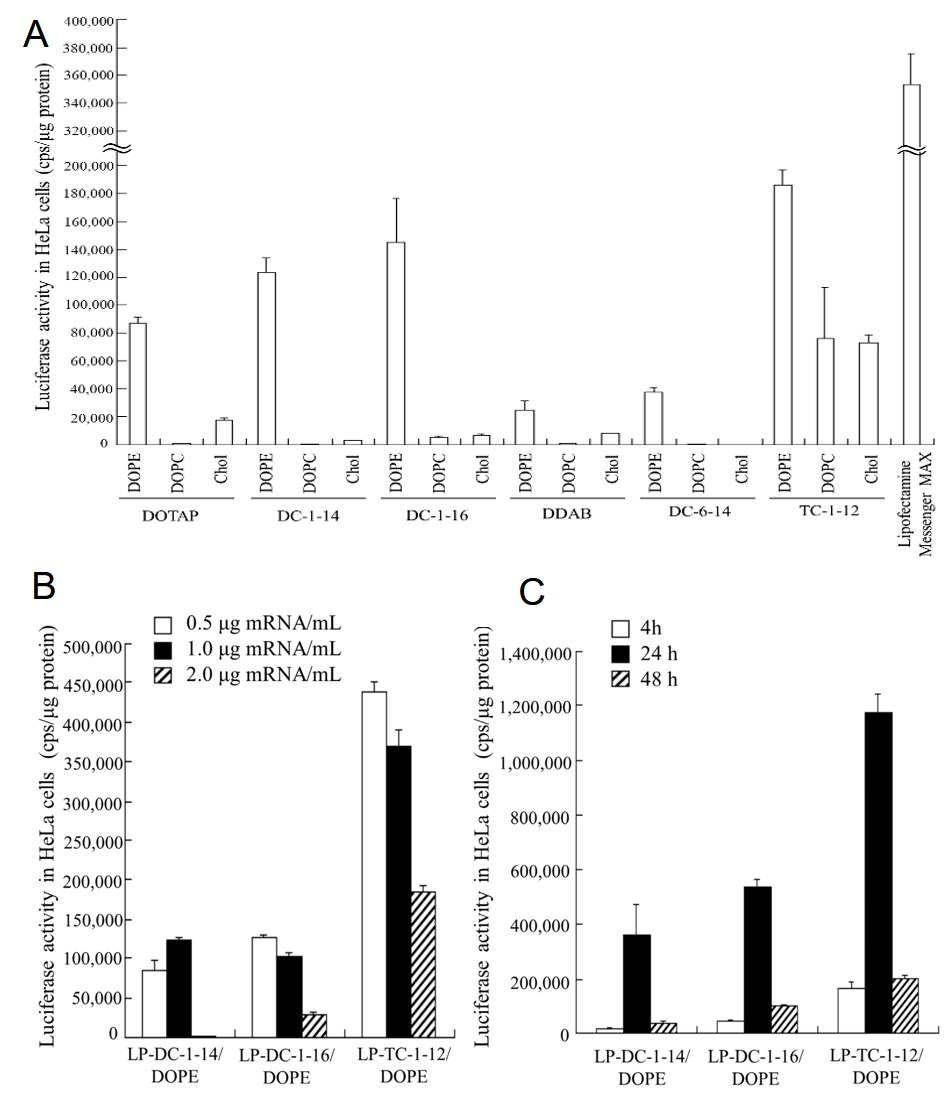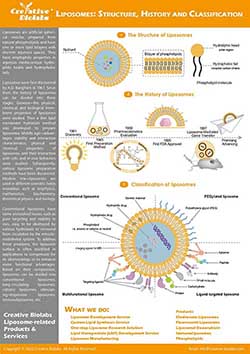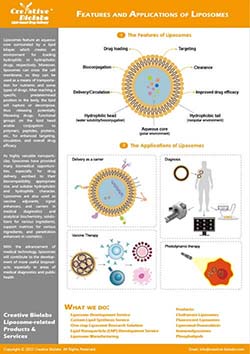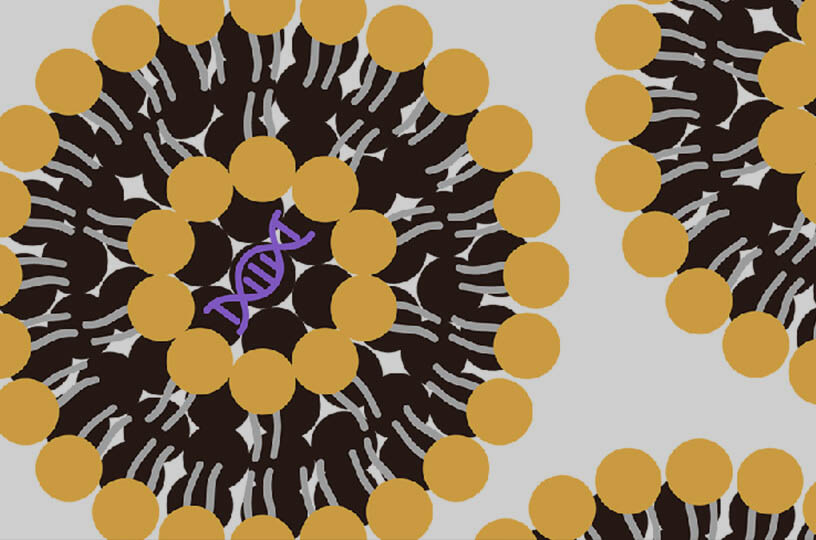Liposomal Transfection Reagent Products
Product Details Publish Data FAQs Resources
Product Details
Creative Biolabs has been dedicated to liposome development for many years. Our liposomal transfection reagent is renowned for its outstanding transfection efficiency, ensuring optimal results for your experiments.
Cationic liposome-mediated transfection is one of the most common methods for introducing exogenous genetic material into cells. Through electrostatic interactions, positively charged cationic liposomes can form complexes with negatively charged nucleic acids. These complexes can be adsorbed by the negatively charged cell membrane and internalized into the cell through endocytosis. Liposome-based transfection offers advantages such as low immunogenicity, high reproducibility, simple operation, and no need for special equipment.
Creative Biolabs provides a range of efficient transfection reagents based on cationic liposomes and LNPs, and our stringent quality control ensures the stability and reliability of our products. You can select the appropriate product based on "Cell Type" and "Sample Type," and feel free to contact us for more detailed information.
Publish Data
Efficient mRNA Delivery with mRNA Lipoplexes Prepared Using a Modified Ethanol Injection Method
Author: Tang, Min, et al.
This project explores the impact of lipid composition, mRNA concentration, and transfection time on transfection efficiency through luciferase expression in hela cells. Researchers prepared 18 lipid mixtures comprising 8 cationic lipids and 3 helper lipids. Subsequently, they prepared cationic liposome/mRNA complexes (mRNA lipoplexes) by combining the lipid mixtures with mRNA. Figure A demonstrates that luciferase expression is significantly higher in lipoplexes with lipid compositions DC-1-14/DOPE, DC-1-16/DOPE, and TC-1-12/DOPE compared to other lipoplex groups. Luciferase activity is optimal when mRNA concentration ranges from 0.5 to 1.0 μg/mL (Figure B) and transfection time is 24 hours (Figure C). This project indicates that transfection reagents based on cationic liposomes exhibit high transfection efficiency, with lipid composition, mRNA concentration, and transfection time significantly influencing transfection efficiency.
 Fig.1 The impact of lipid composition, mRNA concentration, and transfection time on luciferase expression in hela cells.1,2
Fig.1 The impact of lipid composition, mRNA concentration, and transfection time on luciferase expression in hela cells.1,2
FAQs
What is the shelf life of the product?
The product is generally valid for one year when stored at 4°C. For long-term storage without use, it can be stored at -20°C.
How should the product be used after storage at -20°C?
After storage at -20°C, precipitation may occur. It is necessary to incubate the product in a 37°C water bath for 30 minutes to ensure complete dissolution before using it for cell transfection.
Can the product still be used if precipitation is present?
The product received may experience precipitation after dissolution due to low-temperature transportation with dry ice. After incubating in a 37°C water bath for 30 minutes to ensure complete dissolution, it can be used normally. If there is still a slight amount of precipitation after the 37°C water bath, it can be mixed thoroughly and used directly. Testing has shown that this does not affect the efficacy of the product.
Can the product be vortexed or centrifuged?
Please note that vortexing or centrifugation is not recommended, as vigorous shaking can cause significant damage to the liposomes.
Are there any specific requirements for the culture medium?
It is recommended to use a serum-free culture medium without antibiotics.
Resources
References
-
Tang, Min, et al. "Efficient mRNA delivery with mRNA lipoplexes prepared using a modified ethanol injection method." Pharmaceutics 15.4 (2023): 1141.
-
under Open Access license CC BY 4.0, the image is a composite of figure 2 and figure 5.

For Research Use Only. Not For Clinical Use

 Fig.1 The impact of lipid composition, mRNA concentration, and transfection time on luciferase expression in hela cells.1,2
Fig.1 The impact of lipid composition, mRNA concentration, and transfection time on luciferase expression in hela cells.1,2



 For Research Use Only. Not For Clinical Use
For Research Use Only. Not For Clinical Use


